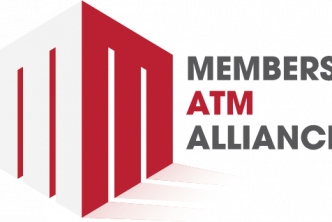There’s no denying it, 2020 has been a long year. I’m sure we’d all agree that at this point it might be best to just hit fast-forward and move on to 2021. Since our collective time machine seems stuck on reverse, we’ll need to continue dealing with it. Obviously, the pandemic hasn’t spared many aspects of life; everything has been impacted. Certainly financial services providers know this all too well. We have been forced to pivot from a tremendous high point (low unemployment, all-time high stock market, etc) to a historical low point in a matter of months.
One area that has been on that roller coaster since March is auto lending. As the year began, prognosticators felt that U.S. sales of new passenger vehicles would be down slightly from the 17.0 million level we saw in 2019. That felt reasonable given the higher levels we’ve experienced over the last four years. January and February were right on track, and then the bottom fell out. March sales dropped over 23% from February. In April the trend accelerated with sales off 47% from April 2019. The seasonally adjusted annual rate, or SAAR, dropped to a historic low of 8.726 million. Those of us who thought we’d seen the bottom in 2009 were wrong.
Despite all that doom and gloom there have been signs of recovery. By June the SAAR had rebounded to more than 13 million units but the first half of 2020 was still down 23.1% compared with the first half of 2019. A deeper look at the numbers reveal more reason to be hopeful. You see, the SAAR, which gets quoted often by the media, includes fleet sales. The bulk of fleet sales are rental cars, none of which are financed by traditional auto lenders. By looking at just retail sales the numbers show that sales in June were only off a more palatable 6% versus June 2019.
Retail sales had been propped up by manufacturer incentive spending. The offers were strong enough to lure people out of lockdown to buy a car in March and April. Many indirect lenders were able to reap the benefits of having a ‘touch-free’ workflow in place. If their rates/programs were good enough to beat the Captive lenders, they were rewarded with record loan volumes. The boon in incentive spending did come with repercussions, though. While new cars were flying off the lots, the plants that produce those cars were actually shut down. So dealers burned through a few months of inventory and then were left with no mechanism to replace it.
July and August retail sales volume will largely be dictated by a lack of new vehicle inventory. While plants have restarted, their six to eight-week hiatus has caused a gap in the inventory which will take time to recover from. In the meantime, dealers have focused on selling used cars. This has also had repercussions, driving the wholesale price of used cars to unprecedented increases. So we have a lack of new cars and high-priced used cars, both of which will not lure many buyers. Retail sales will continue to recover as new car inventory is replenished. That, in turn, will bring used car values back to normal. If the economic recovery can keep pace, then we should see auto-loan demand return to normal. Until then, our exceptionally low rate environment should make auto loan refinances attractive for a large number of members who financed a car in 2018/2019.
About Credit Union Loan Source. CULS’ 15-year track record and expertise in the auto lending industry offers investing credit unions the chance to increase revenue by taking advantage of indirect auto loan participations originated through a large network of franchise dealers across eight states. CULS expertise, state of the art systems and nimble culture offer an attractive option for investing credit unions to grow their loan portfolio with quality assets.
To learn more about how a partnership with CULS may benefit your credit union, please feel free to contact us at consult@myleverage.com





